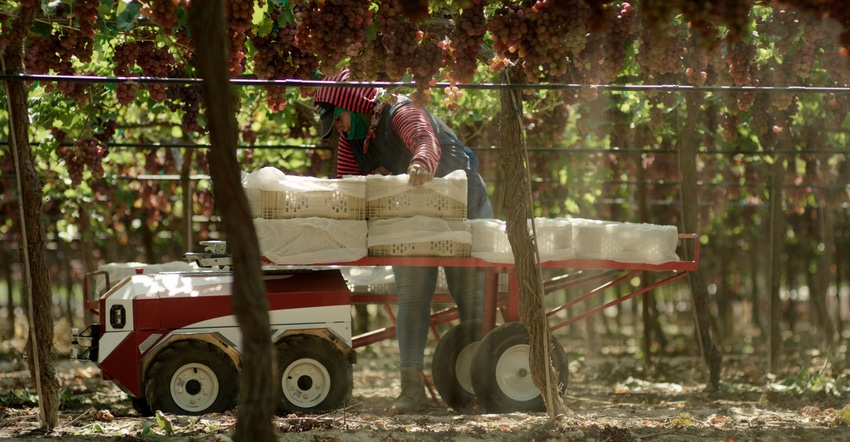March 17, 2021

A phone conversation with Suma Reddy is a super-charged conversation that covers key issues facing agriculture. In a matter of minutes a listener knows she’s putting serious energy into solving key problems in agriculture. This “mission-driven entrepreneur,” as Reddy calls herself, has a new venture — Future Acres. The first product under development is a robot that will make work easier for farm laborers. And to fund the idea, Reddy has turned to crowdfunding.
“I’ve spent 15 years in ag tech and clean tech,” Reddy says. “I want to use the power of innovation and technology to improve our society and drive real change.” That passion grew from her early work as a Peace Corps volunteer in West Africa, where she first experienced the challenges of food production.
Her work has been in a variety of areas, from vertical farming to managing farm waste. “It has been an insanely amazing learning experience,” she says. And now she’s turned her attention to autonomous farming.
Taking on 3 challenges
Reddy looked at agriculture and discovered three factors that would drive autonomy for agriculture, covering the three parts of the food industry:
• Why do it for farms?
• Why engage for farmworkers?
• What’s in it for consumers?
She points to the often-repeated notion that agriculture is charged with feeding 10 billion people by 2050 while facing scarcity of labor, land and environmental inputs. And growing scrutiny along the food chain. Looking at that, the idea was to approach the three challenges with an eye toward autonomy.
For the farm? She notes that revenue is falling, especially in specialty crops where 30% of farm labor is tied up in simple transport tasks — moving baskets from harvest area to shipping, for example. And with falling revenue, this became an autonomy opportunity.
For the farmworker? The work is hard. “These can be brutal working conditions, with back and shoulder pain,” Reddy says. “They need the jobs, the wages, but it takes a toll physically.” She points to the table grape industry, where workers clip grapes from vines to be placed in baskets, and then small carts filled with those picked grapes have to be pushed manually to the end of the row for pickup. These are long rows.
And for the consumer? Consumers are getting more involved in agriculture, and Reddy got quick evidence of that. Recently, Future Acres announced the opportunity to invest in the company’s ag robot through a crowdfunding program. The aim? To raise $3 million.
That last piece — getting the consumer involved — has turned into a solid opportunity for Future Acres. When Farm Progress talked to her, the crowdfunding campaign had just been launched online, and individual consumers interested in investing were already signing up. “It blows my mind that consumers care more about ag,” she says.
The 1st product
The idea on tap for Future Acres’ first product solves a large portion of those three gaps for farmer, worker and consumer. The electric Carry robot is a compact unit that’s designed to move table grape baskets from the row out to be picked up. This is a task once done solely by workers manually pushing grape-filled, stacked baskets to the end of the row.
The Carry electric robot will move down the row to where it’s needed. The worker simply hitches up the trailer of grape baskets, and the compact machine heads back up the row to drop the baskets off, then heading back to get more.
Carry can also bring empty baskets into the work area for laborers, saving back-and-forth trips — which reduces worker physical stress.
“I call it a harvest companion,” Reddy says. “It’s less labor-intensive. It can haul hundreds of pounds of crops on all terrain; and by taking over that piece of labor, it can increase production efficiency by up to 30%.”
The compact robot uses machine learning and artificial intelligence to avoid obstacles, and it is continually collecting data as it navigates through the operation. She notes that it could even someday carry sensors that might provide more information for farm management.
The electric Carry uses a swappable battery that can run seven to 10 hours on a single charge. The swappable battery just makes “refills” faster and easier.
“This is our first flagship product for specialty crops,” Reddy says. “We’re focused on precision agriculture. This unit can travel across the farm, it can map the farm and it can measure crop yield or crop weight. We’ll build in that intelligent technology in the future.”
As for consumer interest? In just the first few hours of the crowdfunding launch, Future Acres hit 10% of its goal. Learn more at futureacres.co.
About the Author(s)
You May Also Like






